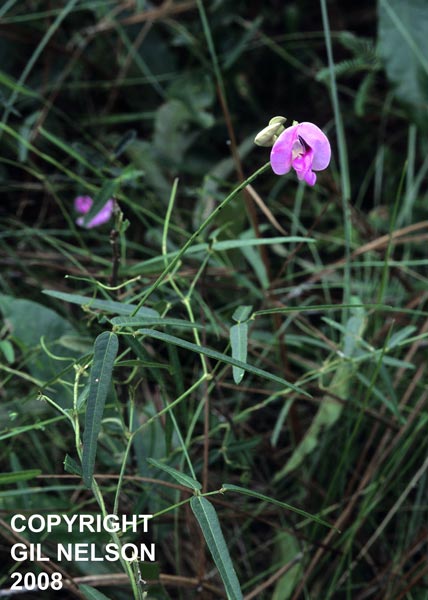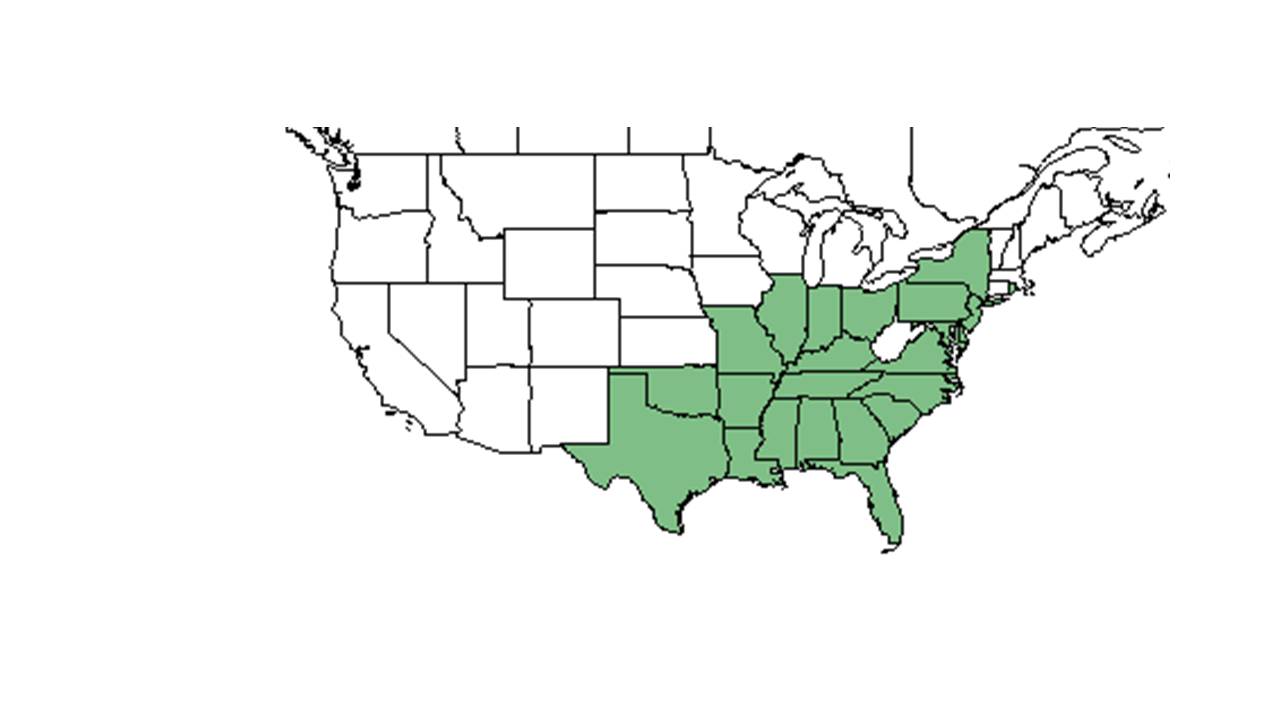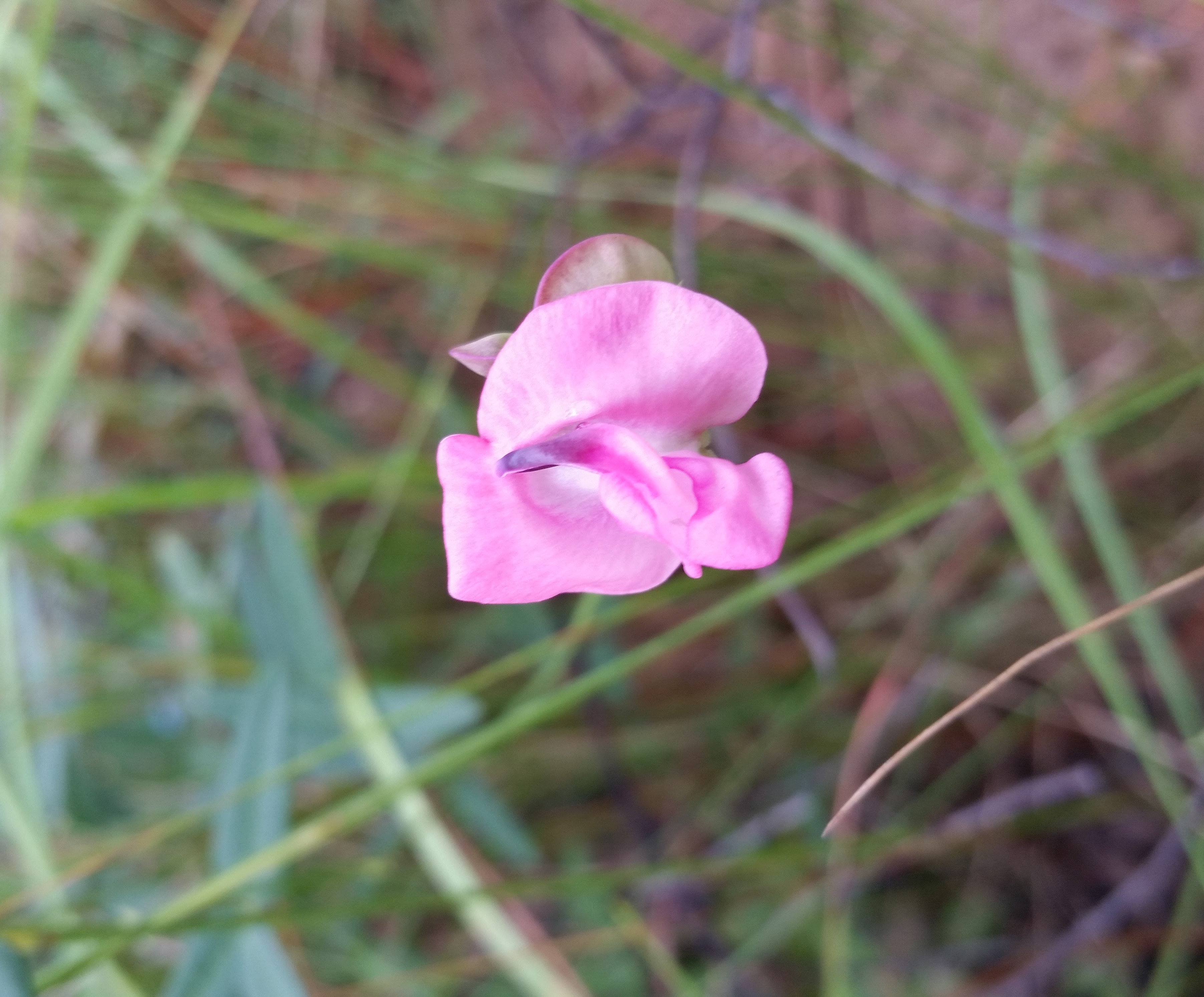Difference between revisions of "Strophostyles umbellata"
(→Ecology) |
|||
| Line 47: | Line 47: | ||
It occurs in areas that are frequently burned.<ref name=hai/> | It occurs in areas that are frequently burned.<ref name=hai/> | ||
| − | + | ===Pollination and use by animals=== <!--Herbivory, granivory, insect hosting, etc.--> | |
| − | + | ''S. umbellata'' has been observed to host ''Megachile integra'' (family Megachilidae).<ref>Discoverlife.org [https://www.discoverlife.org/20/q?search=Bidens+albaDiscoverlife.org|Discoverlife.org]</ref> It is included in bobwhite quail diet.<ref name=swe>Sweeney, J. M., C. R. Wenger and N. S. Yoho. 1981. Bobwhite quail food in young Arkansas loblolly pine plantations. Arkansas Experiment Station bulletin 852. Fayetteville, AR, University of Arkansas, Divisionn of Agriculture, Agricultural Experiment Station.</ref> | |
| − | It is included in bobwhite quail diet.<ref name=swe>Sweeney, J. M., C. R. Wenger and N. S. Yoho. 1981. Bobwhite quail food in young Arkansas loblolly pine plantations. Arkansas Experiment Station bulletin 852. Fayetteville, AR, University of Arkansas, Divisionn of Agriculture, Agricultural Experiment Station.</ref> | + | <!--===Diseases and parasites===--> |
| − | |||
==Conservation, cultivation, and restoration== | ==Conservation, cultivation, and restoration== | ||
Revision as of 10:40, 18 June 2021
| Strophostyles umbellata | |
|---|---|

| |
| Photo taken by Gil Nelson | |
| Scientific classification | |
| Kingdom: | Plantae |
| Division: | Magnoliophyta – Flowering plants |
| Class: | Magnoliopsida – Dicotyledons |
| Order: | Fabales |
| Family: | Fabaceae ⁄ Leguminosae |
| Genus: | Strophostyles |
| Species: | S. umbellata |
| Binomial name | |
| Strophostyles umbellata (Muhl. ex Willd.) Britton | |

| |
| Natural range of Strophostyles umbellata from USDA NRCS Plants Database. | |
Common names: Pink fuzzybean, Perennial sand bean
Contents
Taxonomic notes
Variations: Strophostyles umbellata var. paludigena Fernald.[1]
Description
"Annual or perennial, trailing, twining or weakly climbing, herbaceous vines. Leaves pinnately 3-foliolate; leaflets entire but often basally lobed, petiolulate, stipellate; stipules striate, small, persistent. Racemes axillary, long-pedunculate with few to several, closely clustered, apparently subcaptiate, subsessile, papilionaceous flowers subtended by a small, striate bract and with a pair of striate, persistent bractlets just beneath the flower. Calyx more or less 2-lippd, tube campanulate, the 2 upper lobes almost completely fuse and the lobes therefore appearing as 4, the lowermost lobe longest; petals pink, purple or nearly white, the keel beaked and strongly incurved but not coiled, longer than the wings; stamens diadelphous 9 and 1; ovary sessile or nearly so, style curved, bearded along its inner side. Legume linear, terete or nearly so, with valves laterally twisted after dehiscence; seeds several, woolly."[2]
'Trailing or weakly twining, perennial vine with stems (0.3) 0.6-1.5 (2) m long and with at least the younger portion densely and retrorsely or spreading pubescent. Leaflets widely to narrowly ovate, lanceolate to elliptic or oblong, unlobed, 2-5 cm long, glabrous or nearly so above and below or somewhat appressed-pubescent beneath. Racemes 1-2.5 dm long with few to several, capitately clustered flowers; pedicels to 1 mm long subtended by oblong bract to 0.7 mm long and with pairs of ovate to oblong, obtuse bractlets 0.8-1 mm long. Calyx tube glabrous or nearly so, 2-2.5 mm long, lobes glabrous except for the ciliate margins and usually strigose lowermost lobe; petals pink or pale purple, often fading yellowish, the standard 1-1.4 cm long. Legumes sparsely appressed-pubescent, 3-6.5 cm long, 4 mm broad; seeds 3-6 mm long."[2]
Distribution
Ecology
Habitat
In the Coastal Plain region, S. umbellata has been found in loamy sand of a depression bordering mesic flatwoods; understory of upland slash pinewoods; transition zone of longleaf pine flatwoods to pine savanna; semi-shaded loam in old growth longleaf pine forest; sand of open meadow; low savanna above creek floodplain; dry pine barrens; open pinewoods; open grassy clearing of upland pine woodland; floodplain shores of lakes; upland deciduous woods; slopes and ridges; and in a grassy area just above a fresh water marsh.[3][4] It is predominately found in native groundcover, such as the upland pines of South Georgia.[5] It has been documented in disturbed habitats such as loamy sand of roadside slopes, powerline corridors, loamy soil of roadside ditches, dikes on lake shores, white sandy bottoms of dried ponds, and in clay roadside banks. Outside of the Coastal Plain region in Indiana, it has been found in burned limestone glades.[6] When exposed to soil disturbance by military training in West Georgia, S. umbellata responds negatively by way of absence.[7] It also responds negatively to soil disturbance by agriculture in Southwest Georgia.[8]
Soil types include loamy sand, loam, sand, loamy soil, and clay.[3] Associated species include Crotalaria, Desmodium, Cassia fasciculata, Cephalanthus, Desmodium ochroleucum, D. lineatum, Habenaria integra, H. ciliaris, and Aster umbellatus.[3]
Strophostyles umbellata is an indicator species for the Clayhill Longleaf Woodlands community type as described in Carr et al. (2010).[9]
Phenology
S. umbellata has been observed to flower June through September and in December with peak inflorescence in September.[3][10] It has been observed fruiting August and September.[3]
Seed dispersal
This species is thought to be dispersed by gravity.[11]
Fire ecology
It occurs in areas that are frequently burned.[4]
Pollination and use by animals
S. umbellata has been observed to host Megachile integra (family Megachilidae).[12] It is included in bobwhite quail diet.[13]
Conservation, cultivation, and restoration
Cultural use
Photo Gallery
References and notes
- ↑ Weakley, A.S. 2015. Flora of the southern and mid-atlantic states. Working Draf of 21 May 2015. University of North Carolina at Chapel Hill, Chapel Hill, North Carolina.
- ↑ 2.0 2.1 Radford, Albert E., Harry E. Ahles, and C. Ritchie Bell. Manual of the Vascular Flora of the Carolinas. 1964, 1968. The University of North Carolina Press. 640. Print.
- ↑ 3.0 3.1 3.2 3.3 3.4 Florida State University Robert K. Godfrey Herbarium database. URL: http://herbarium.bio.fsu.edu. Last accessed: July 2015. Collectors: Loran C. Anderson, Aaron Leblanc, James R. Burkhalter, A. F. Harris, Nancy E. Jordan, Wilson Baker, James R. Burkhalter, Dennis Hardin, A. H. Curtiss, Gary R. Knight, Thomas P. Kruas, R.K. Godfrey, D. B. Ward, S. C. Hood, Sidney McDaniel, R. Komarek, Rodie White, Leon Neel, Lisa Keppner, John B. Nelson, A. E. Radford, W. R. Anderson, Samuel B. Jones, Jr., Joseph Ewan, R. Kral, Robert A. Norris, Nancy Craft Coile, Nan Bates, Geo M. Merrill, Billie Bailey. States and Counties: Alabama: Macon. Florida: Alachua, Calhoun, Columbia, Duval, Escambia, Franklin, Gulf, Holmes, Jackson, Leon, Liberty, Nassau, Santa Rosa, Wakulla, Walton, Washington. Georgia: Baker, Elbert, Grady, Thomas. Louisiana: Rapides, Union. Mississippi: Jasper, Lamar, Oktibbeha. North Carolina: Carteret. South Carolina: Fairfield, Pickens, Richland. Texas: Houston. Compiled by Tall Timbers Research Station and Land Conservancy.
- ↑ 4.0 4.1 Hainds, M. J., R. J. Mitchell, B. J. Palik, L. R. Boring and D. H. Gjerstad. 1999. Distribution of native legumes (Leguminoseae) in frequently burned longleaf pine (Pinaceae)-wiregrass (Poaceae) ecosystems. American Journal of Botany 86:1606-1614.
- ↑ Ostertag, T.E., and K.M. Robertson. 2007. A comparison of native versus old-field vegetation in upland pinelands managed with frequent fire, South Georgia, USA. Pages 109–120 in R.E. Masters and K.E.M. Galley (eds.). Proceedings of the 23rd Tall Timbers Fire Ecology Conference: Fire in Grassland and Shrubland Ecosystems.
- ↑ Wade, K. A. and E. S. Menges. 1987. Effects of fire on invasion and community structure of a southern Indiana cedar barrens. Indiana Academy of Science 96:273-286.
- ↑ Dale, V.H., S.C. Beyeler, and B. Jackson. (2002). Understory vegetation indicators of anthropogenic disturbance in longleaf pine forests at Fort Benning, Georgia, USA. Ecological Indicators 1(3):155-170.
- ↑ Kirkman, L.K., K.L. Coffey, R.J. Mitchell, and E.B. Moser. Ground Cover Recovery Patterns and Life-History Traits: Implications for Restoration Obstacles and Opportunities in a Species-Rich Savanna. (2004). Journal of Ecology 92(3):409-421.
- ↑ Carr, S.C., K.M. Robertson, and R.K. Peet. 2010. A vegetation classification of fire-dependent pinelands of Florida. Castanea 75:153-189.
- ↑ Nelson, G. PanFlora: Plant data for the eastern United States with emphasis on the Southeastern Coastal Plains, Florida, and the Florida Panhandle. www.gilnelson.com/PanFlora/ Accessed: 14 DEC 2016
- ↑ Kirkman, L. Katherine. Unpublished database of seed dispersal mode of plants found in Coastal Plain longleaf pine-grasslands of the Jones Ecological Research Center, Georgia.
- ↑ Discoverlife.org [1]
- ↑ Sweeney, J. M., C. R. Wenger and N. S. Yoho. 1981. Bobwhite quail food in young Arkansas loblolly pine plantations. Arkansas Experiment Station bulletin 852. Fayetteville, AR, University of Arkansas, Divisionn of Agriculture, Agricultural Experiment Station.
